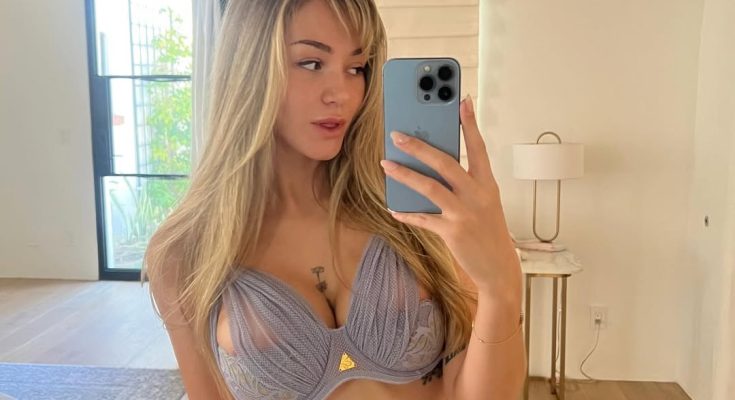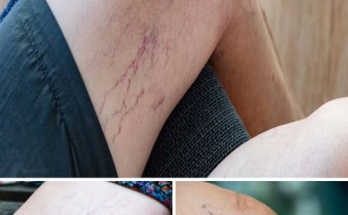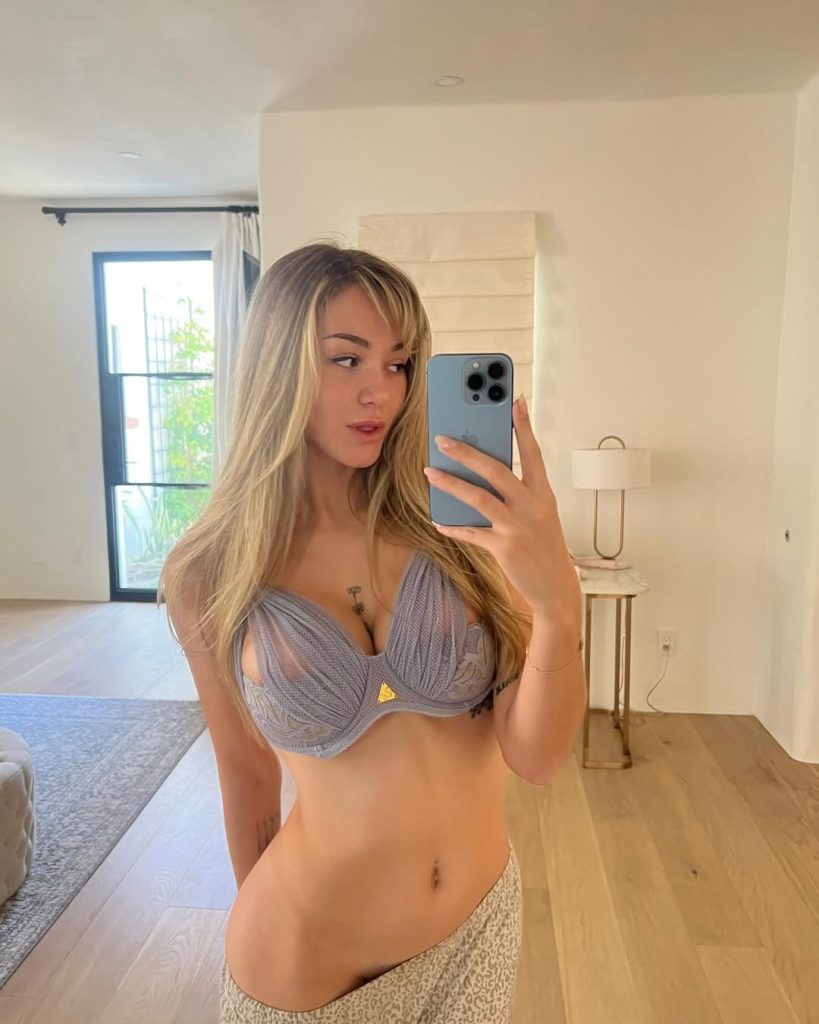
The background is minimalistic and domestic: white ceilings and plain walls speak to the photo’s interior setting, offering neutrality that allows the figure to claim the spotlight. On the right edge, a wooden surface enters the scene—possibly part of a table or shelf—bringing warmth and texture, a gentle counterpoint to the smooth tones elsewhere.
The lighting is soft and natural, likely diffused daylight, brushing across the person’s shoulders and arms in delicate highlights. This subtle illumination amplifies the softness of the image: the tousled, golden-blonde hair catching light like strands of silk, the gentle curves casting shadow with poetic restraint.
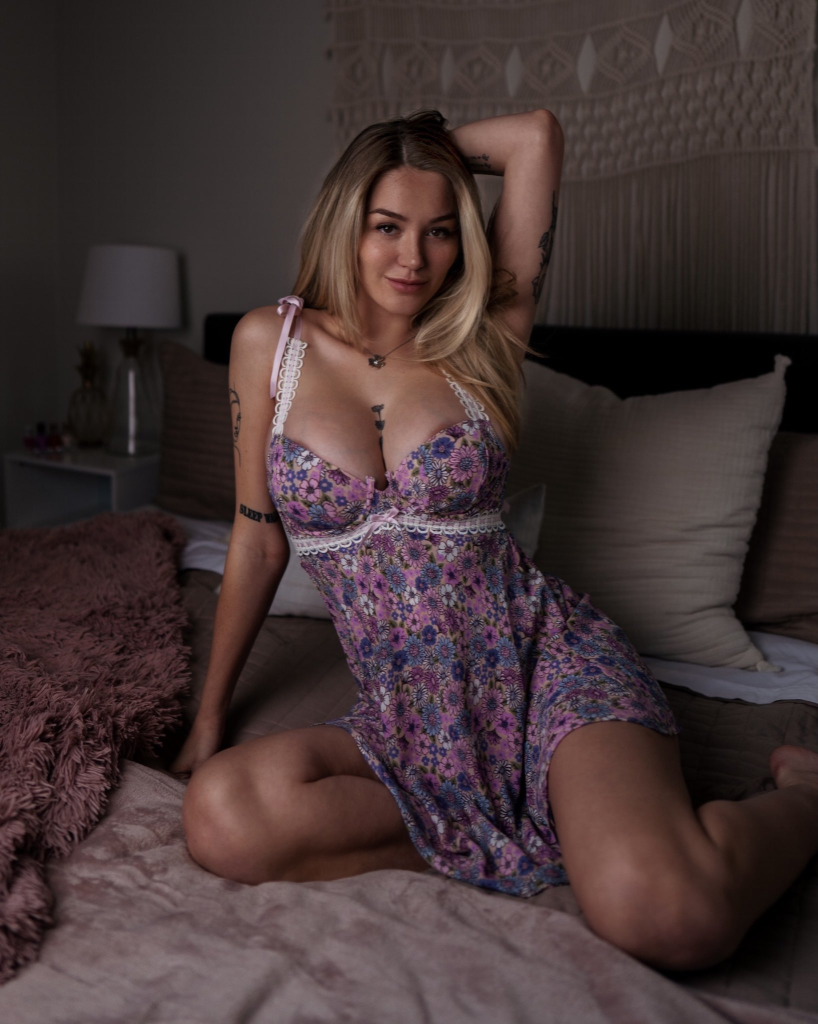
There is a quiet dialogue between vulnerability and confidence here. The floral bikini is not just a garment—it becomes an emblem of sensuality tempered with grace. Flowers have long been symbols of femininity, temporality, and rebirth. The red blooms whisper of passion and courage, while the pink hues suggest affection and tenderness. Together, they bloom across the subject’s body like an emotional landscape.
The pose isn’t overtly staged. There’s a naturalness to the way the hair falls, the slight tension in posture, the relaxed gaze turned away from the camera’s eye—creating an atmosphere of privacy as if the viewer is catching a moment between moments. This choice, intentional or incidental, underscores themes of introspection: the subject is present, yet not performative; accessible, yet self-contained.

The image invites contemplation of personal space—where intimacy unfolds not just through exposure, but through the comfort one finds within their own body. In that way, the photo becomes a portrait of quiet agency: owning one’s form, one’s beauty, without requiring validation.
From a design standpoint, the interplay of warm tones (blonde hair, floral reds, wood grain) against cooler neutrals (white ceiling, soft shadows) fosters visual balance. There’s a harmony in saturation—nothing feels overly contrasted or distracting.
Texture plays a subtle but important role. The smoothness of the skin juxtaposed with the pattern of the bikini fabric creates a tactile tension. You could almost feel the softness of the cotton blend, the warmth of sunlit hair, the cool hush of the indoor air brushing across a bare shoulder.
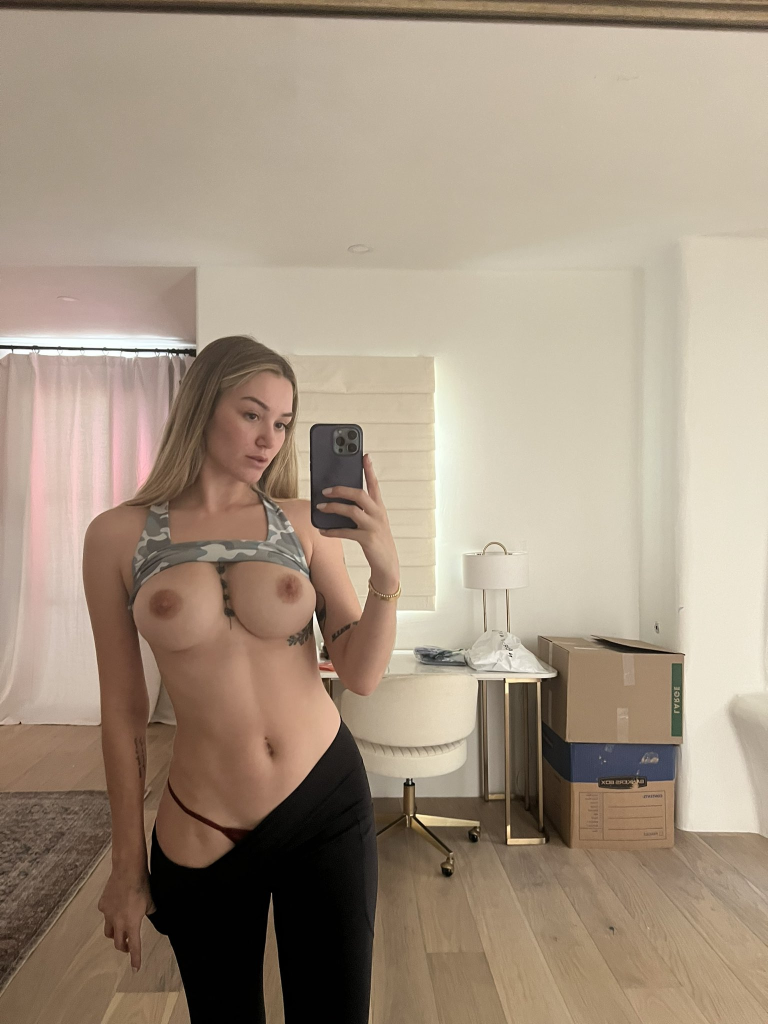
Spatial dynamics are contained yet expansive: while the subject takes up most of the frame, the composition leaves enough breathing room around the figure to evoke openness, freedom. It’s an intimate scene, but it doesn’t press too close.
This image may resonate with themes of personal transformation—a shedding of societal expectations in favor of private authenticity. It carries a sense of “becoming,” perhaps even of self-reclamation. It’s both a mirror and a veil: revealing while protecting.
You might imagine this as a moment just before something begins. Like a dancer backstage, steadying her breath; or a woman staring into the distance, letting go of an old version of herself. There’s an undercurrent of quiet defiance—of embracing softness without surrendering strength.
The floral design brings echoes of tropical climates and ritual beauty—Cambodia’s own rich tapestry of floral traditions comes to mind. Flowers are not mere ornamentation; they are tools of memory, celebration, even spiritual offering. In that light, the bikini transcends fashion—it becomes a canvas for cultural and emotional storytelling.
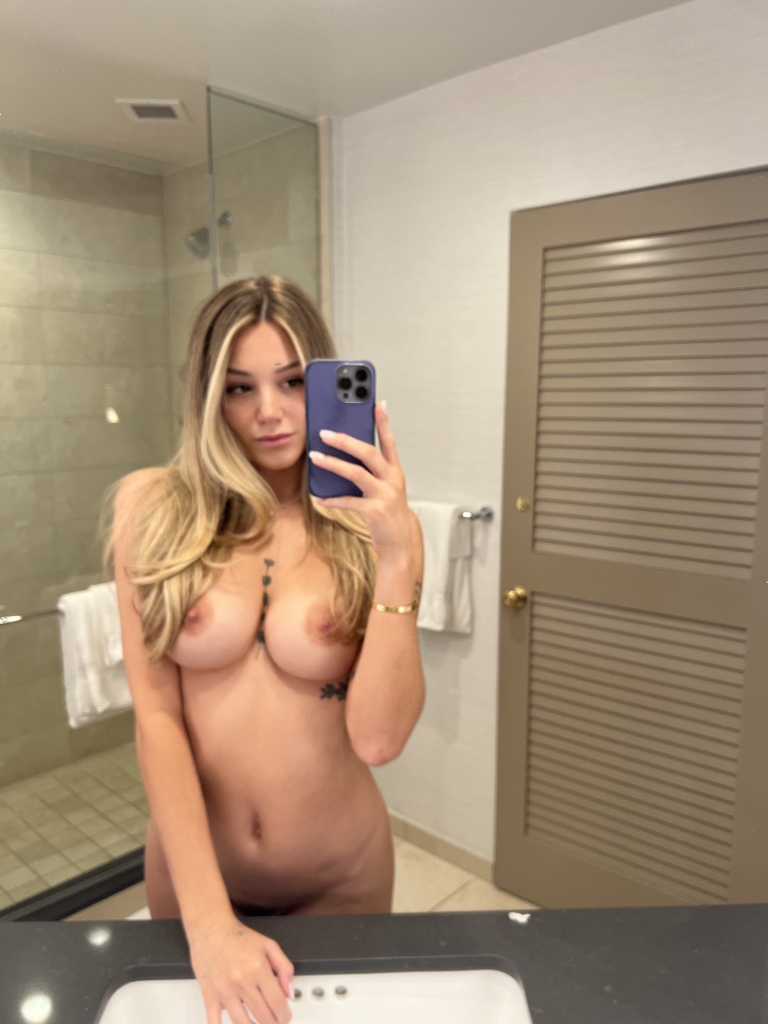
Who is the subject? Is she preparing for a private ritual, a moment of personal celebration, or perhaps just caught in a fleeting pause from daily routine? The narrative is open-ended, which is part of its power. It lets the viewer project meaning—invite their own interpretations into the folds of her silence.
